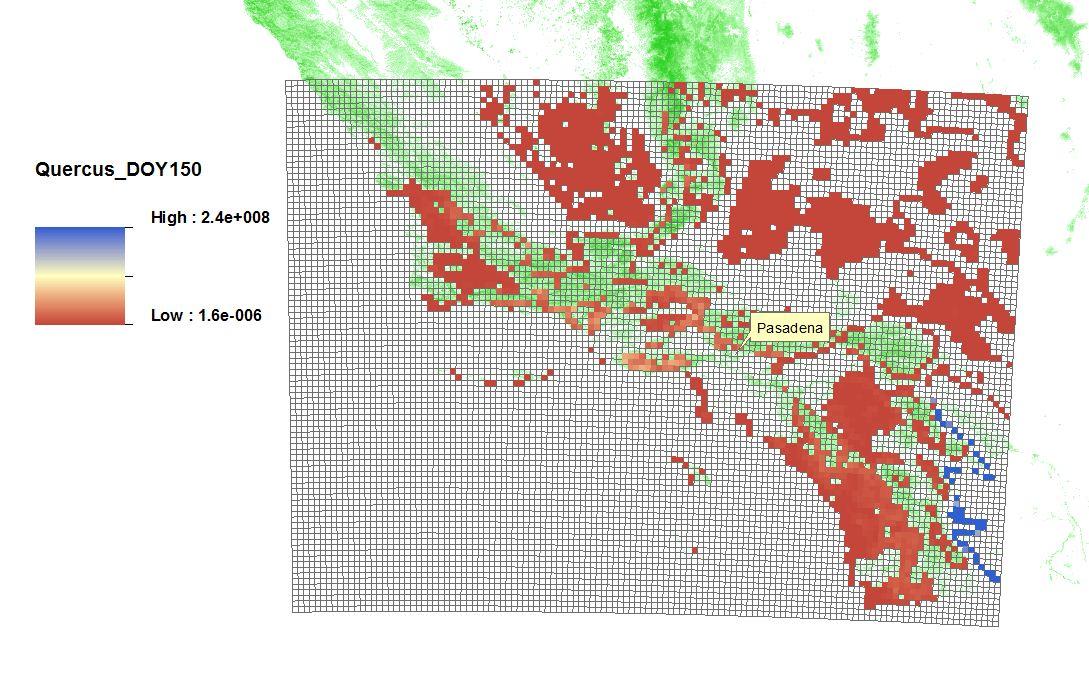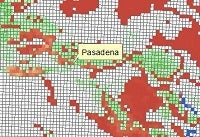ACD Model Simulates Release of Pollen
ACD scientists Tiffany Duhl and Alex Guenther have developed a model that simulates the release of wind-dispersed pollen from vegetation. In collaboration with colleagues at the California Institute of Technology and Washington State University, they are using the model to address the question of how pollen occurrence may be affected by climate change and interact with anthropogenic pollutants to affect human health in a changing world. The model is driven by meteorological variables and is sensitive to potential climate shifts. Vegetation cover and species composition data are obtained by integrating several landcover datasets and a database of allergenic vegetation species providing pollen production potentials and relative allergenicities. PFT-specific pollen release modules have been developed for both tree and grass species.

The model has been initially calibrated to simulate the release of pollen by important allergenic tree and grass species in a model domain centered over Southern California (Figure 1), which contains nine pollen counting stations used to validate model output and to perform epidemiological analyses using observed pollen concentrations and data from a children’s health study being performed as part of this project. For the moderate Mediterranean and oceanic climate zone encompassing much of the most populous fraction of the initial model domain, temperature tends to be the main driver controlling the timing of pollen release while precipitation controls the magnitude of pollen produced by the allergenic species selected for simulation. Preliminary evaluations of predicted versus observed pollen concentrations within the study domain indicate good agreement for some species. For other species, improved parameterizations are needed.
